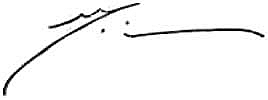|
Nous nous proposons d'étudier ces cinq aspects de l'éducation
l'un après l'autre et aussi dans leurs relations réciproques. Mais
avant d'entrer dans les détails du sujet, je veux faire une recommandation aux parents. La plupart d'entre eux se soucient
fort peu, "pour des raisons diverses, de l'éducation véritable à
donner aux enfants. Quant ils ont mis un enfant au monde et
qu'ils lui donnent la nourriture et satisfont à ses divers besoins
matériels, en veillant plus ou moins bien au maintien de sa bonne
santé, ils pensent avoir fait tout leur devoir. Plus tard ils le
mettront à l'école et se déchargeront sur les maîtres du souci de
son instruction.
D'autres parents savent que leur enfant doit recevoir une
éducation et s'essayent à la faire. Mais fort peu d'entre eux, même
parmi les plus sérieux et les plus sincères, savent que la première
chose à faire pour être capable d'éduquer un enfant, est de
s'éduquer soi-même, de devenir conscient et maître de soi, afin
de ne jamais donner un mauvais exemple à leur enfant. Car
c'est surtout par l'exemple que l'éducation est efficace. Dire
de bonnes paroles et donner de sages conseils à un enfant, a
fort peu d'effet, si soi-même on ne lui donne pas l'exemple de
ce qu'on lui enseigne. La sincérité, l'honnêteté, la droiture, le
courage, le désintéressement et l'oubli de soi, la patience, l'endurance et la persévérance, la paix, le calme et la maîtrise de
soi, sont toutes choses qui s'enseignent par l'exemple infiniment
mieux que par les beaux discours. Parents, ayez un idéal élevé
et agissez toujours en accord avec cet idéal, vous verrez peu à
peu votre enfant refléter cet idéal en lui et manifester spontanément les qualités que vous désirez voir exprimées dans sa nature.
Tout à fait naturellement un enfant a respect et admiration pour
ses parents ; à moins qu'ils ne soient des êtres tout à fait indignes,
ils apparaîtront toujours à leur enfant comme des demi-dieux
qu'il s'efforcera d'imiter de son mieux.
A fort peu d'exceptions près, les parents ne se rendent pas
compte de l'influence désastreuse que leurs défauts, leurs impulsions, leurs faiblesses et leur manque de contrôle sur
eux-mêmes exercent sur leurs enfants. Si vous voulez être respectés
par un enfant, respectez-vous vous-mêmes et soyez à tout moment
|
one and also their reciprocal relations. But before we enter into
the details of the subject, I wish to make a recommendation to
the parents. The majority of them, for various reasons, take very
little thought of a true education to be given to children. When
they have brought, a child into the world and when they have
given him food and satisfied his various material wants by looking
more or less sufficiently well to the maintenance of his good
health, they think they have fully discharged their duty. Later
on, they would put him to school and hand over to the teacher
the care of his mental education.
There are other parents who know that their children should
receive education and try to give it. But very few among them,
even among those who are most serious and sincere, know that
the first thing to do, in order to be able to educate the child,
is to educate oneself, to become conscious and master of oneself
so that one does not set a bad example to one's child. For it is
through example that education becomes effective. To say good
words, give wise advice to a child has very little effect, if one does
not show by one's living example the truth of what one teaches.
Sincerity, honesty, straightforwardness, courage, disinterestedness,
unselfishness, patience, endurance, perseverance, peace, calm,
self-control are all things that are taught infinitely better by one's
example than by beautiful speeches. Parents, have a high ideal
and act always in accordance with that ideal. You will see little
by little your child reflecting this ideal in himself and manifesting
spontaneously the qualities you wish to see expressed in his nature.
Quite naturally a child has respect and admiration for his parents; unless they are quite unworthy, they will appear always to their
children as a demigod whom they will seek to imitate as best as
they can.
With very few exceptions, parents do not take into account
the disastrous influence their defects, impulses, weaknesses, want
of self-control have on their children. If you wish to be respected
by your child, have respect for yourself and be at every moment
worthy of respect. Never be arbitrary, despotic, impatient, ill-tempered. When your child asks you a question, do not answer
him by a stupidity or a foolishness, under the pretext that he cannot
|
























































































